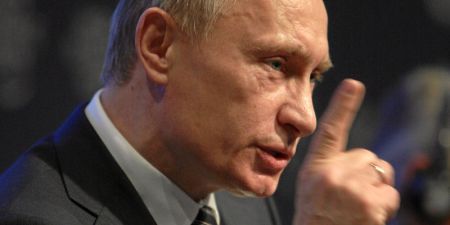
What a difference a few months can make. Russia ended 2013 with record natural gas supplies to Europe, reaching perhaps a third of European demand. Now, with the end of the first quarter not yet in sight, Cold War rhetoric is clouding the gas export giant’s future.
Western politicians on either side of the Atlantic have aired views on the positive role that US LNG could play in reducing the European Union’s reliance on it, while those in the east have focused more on the need to protect national interests if they are threatened in a neighboring state.
The hostility mounted on either side when Russian-backed military seized key installations on the Crimean peninsula in the week starting March 3. A few days later the pro-Russian parliament there decided on holding a referendum in record time: a week later, March 16.
So far there has been nothing underground to match the dramas above ground: gas is flowing as usual through Ukraine and into Europe. But this weekend sees a referendum that could allow Moscow to re-establish a foothold in Ukraine, depending on the way the votes go in Crimea. The event will likely be accompanied by much tension, and the outcome will be closely watched in the west and east alike.
Its purpose is to give the populace the choice of becoming either part of Russia once more, or an autonomous region within Ukraine, with its own president. Not on the menu for the Crimeans is the resumption of status quo ante, prior to the collapse of the government and the flight to Russia of the president, Viktor Yanukovich.
The referendum sets a precedent and could theoretically trigger more splintering within Ukraine, depending on how other countries decide to react to the outcome. The UK, for example, has already said that the referendum itself is illegal. Moscow will not welcome opinions like that, and tensions between the EU and Moscow will likely remain high for the near future.
Moscow would like the Crimea to become part of Russia once more, for strategic purposes. Its natural features have made it popular with Russia’s holiday makers and — infinitely more important — its military. It leases the port facilities of Sevastopol for some of its navy, on a long-term lease that was extended by several decades when a former prime minister of Ukraine and Russia signed their infamous gas deal some years ago.
Ukraine almost achieved a kind of neutrality in December, when the government was poised to sign an agreement with the EU that would have enabled the first steps toward membership. Then Moscow offered it a $15 billion bond deal, and incredibly cheap natural gas. So Ukraine went back to Russia cap in hand, triggering the protests in the capital, Kiev, which enjoyed more support in the west than the east of Ukraine.
Of course, it is not an either/or for Ukraine. Its corrupt business environment falls desperately short of what the EU deems acceptable. Any lingering doubts about Ukraine’s fitness to join the EU were laid to rest by Yanukovich’s imprisonment of the former prime minister Yulia Tymoshenko after coming to power.
Besides, it ought to be possible for Ukraine to work on improving those aspects of political and corporate life without making Moscow jealous. Moscow ought to benefit from having a neighbor that respected the rule of law, the importance of transparency and cultivated an intolerance of corruption.
But its financial mismanagement is the real issue at stake now for the EU and Russia. At present, Ukraine owes Russia $2.89 billion for natural gas, bought in large quantities from Gazprom in the depths of winter and distributed to regional utilities to heat consumers with poor payment discipline.
The West — the EU and the International Monetary Fund–has been slow to offer financial help in the past, but it might be forced to make an exception in this case, for a limited period, if it saves Ukraine from Russia cutting off its gas supplies. That would only harm EU members in southeast Europe, which have little alternatives for gas supply, as the regional supply pipelines are not separated from the transit pipelines. (Last year, Ukraine transited half of Russia’s exports.)
But the next longer-term steps could involve very difficult choices: politics, or commerce. Russia can choose between commercial objectives and possibly turn off the gas into Ukraine and elsewhere; or political objectives and continue to subsidize Ukraine to help persuade the country to lean in Moscow’s direction.
For the EU, the choice is the same. One path is the pursuit of commercial objectives, which could entail removing regulatory impediments hindering Gazprom from building pipelines that so far the EU has bent over backward to discourage — such as South Stream–which would complete Russia’s task of isolating Ukraine. (South Stream bypasses Ukraine altogether).
Another would be the path of pursuing political objectives, which would mean punishing Russia for destabilizing Ukraine, and making life unpleasant by demanding more third party access, the abandonment of oil indexation, enforced trading at hubs, and generally throwing at it every weapon at its disposal.
Either approach is unpalatable for both sides: the alienation of a major trading partner or befriending someone with opposing world views.
Fortunately for now, the EU is well positioned to do with less gas from Russia. Demand is low, the weather is becoming mild, and there is plenty of gas still in store. This buys valuable breathing space.
But with US LNG not to mention shale gas still some years away, and the political barometer forecasting a prolonged spell of unsettled weather, many consumers will be hoping that the winter of 2014-15 is even milder in northwest Europe than the present one has been.
Source: Platts
We use cookies to improve your experience. By continuing to use our site, you accept our Cookies, Privacy Policy,Terms and Conditions. Close X